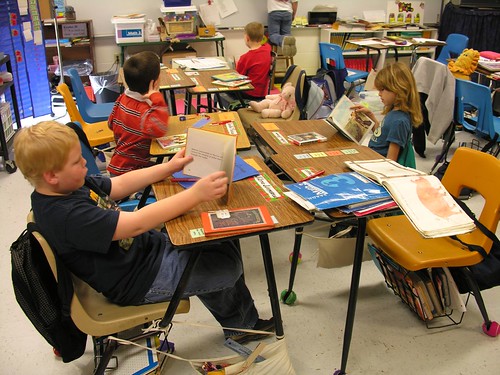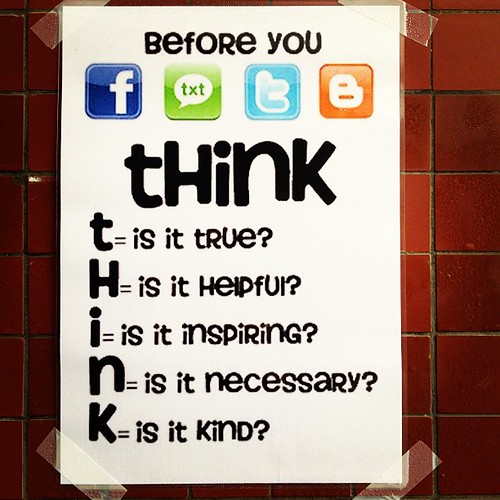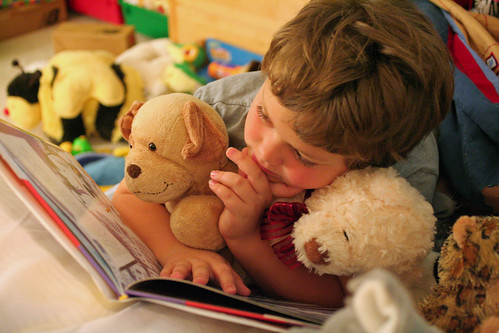 Old Shoe Woman via Compfight cc
Old Shoe Woman via Compfight cc
Dear all,
·
As one of our Principles of Learning is about
challenging our students I thought that this video aligned very nicely with
where we are going.
·
In addition when I read the following article I
thought how well it also aligned with the core of the Principles of Learning
that we are introducing and in addition the 5 Pillars of our Achievement
Culture (Welcoming Community, Choice words,
Do no Harm, Never Too Late to Learn, and Best in the Universe). I have
attached below brief explanation of these 5 pillars and what they mean to us, in
case you have forgotten from the start of the year.
“Belonging to an academic
community: Feeling connected to adults and peers at school
intellectually, not just socially, through an academic community, is a strong
motivator. Feeling a sense of belonging in an intellectual community helps
students interpret setbacks as a natural part of learning, and not as a
personal deficit that sets them apart.
Belief in the likelihood
of success: Students’ belief in their own self-efficacy is a better
predictor of academic success than measured ability. Students need to feel that
they’re likely to succeed in order to sustain the hard work of learning
something challenging. When students believe they’ll fail, they often don’t
invest in the work or devalue the task.
The work has meaning and
value: The brain naturally looks for connections. When students
find academic work to be relevant to lives, interests, and concerns they’re
much more likely to work on a task in a sustained way and to perform well. It
takes much more energy to focus attention on a task that does not have direct
value to the student.
Belief that abilities and
intelligence can grow with effort: Known as a growth
mindset, Carol Dweck’s theory we refer to above) if students believe the brain
is a muscle that must be exercised, they’re more likely to interpret setbacks
as opportunities to learn and improve. This mindset is associated with the joy
of mastering a task, rather than learning for a grade or to outperform others.”
·
In addition following on from something I said
in a recent Monday morning briefing about posting information, this TED is
about how Twitter protects users, it is interesting and only 9 minutes long,
but if that is too long just join at minute 7.30 and see what information each
picture that is posted can display but fortunately not on Twitter.
See you on Monday,
Yours
Adrian

CULTURE
OF ACHIEVEMENT (Built on the
work of Fisher, Frey and Pumpian)
The culture of achievement is what our mission is built upon and the 5
pillars of achievement connect our culture with our vision.
The pillars are first and foremost philosophical agreements that are
then turned into policy and practice. Building the culture is part of our
strategic effort.
“The collective power of a school community that turns its attention to
building a culture of achievement cannot be underestimated.”
1
Welcome: We make
ISHCMC comfortable so that every person who crosses out threshold believes they
are entering a place of wonder. Every person should feel; welcome, noticed and
valued. If not then our community will not be engaged, energized or empowered.
This affective experience sends a powerful message as to what we value.
2
Do no harm: A responsive
school culture should first seek to prevent harm to others through measured
words and behaviors. All rules, policies and procedures should be intended to
frame the way that ISHCMC students learn. What is the purpose of an ISHCMC
education? How do the students who graduate from ISHCMC match our mission? ISCHMC discipline codes should teach
students to assess their actions as appropriate or not, based on an ethical
standard and not simply adherence to a set of rules that are subjectively
judgmental and too often inconsistently enforced. Our aim is to build our
behavior codes on the principle that one’s actions have consequences and that
student’s must learn to take care of themselves, others and the environment.
3
Choice words:
We are shaped by the language we use about ourselves and by the language
used by others about us. “Language creates realities and invites
identities” Peter Johnstone, Choice Words (2004). The language students hear
should help them tell a story about themselves. School should be a place
students rediscover, develop, and use their talents, gifts and natural
capabilities. Students should feel they are capable of great learning and of
finding their passions. Teachers must believe in students, their learning and
their ability to cultivate quality through their efforts. A growth mindset is
necessary for achievement as it produces greater willingness to confront
problems, take risks and develop resilience.
4
It’s never
too late to learn: Are we willing to do what it takes to teach all
students in ISHCMC? Can we develop systems that hold learning not time, as the
constant? Can we push students to go beyond the minimum to discover what they
are capable of achieving? At ISHCMC we presume competence in all students. This
positive presupposition is important for the way we encourage teachers and
students to interact. We expect teachers to uncover topics and not just to
cover them and this is an important part of our Principles of Learning. We
support a gradual release model of teaching that empowers students as they go
through ISHCMC to take more and more control of their learning.
5
Best School
in the Universe: Declaring this puts our beliefs in the public arena
and illustrates that we are confident that we can be what we claim. It’s not
just about the future or where we are going and what we can achieve it is also
about NOW and every lesson that is being taught, the learning that is taking
place, the interactions with and between stakeholders. Every day there are
thousands of planned or unplanned interactions between students and teachers
some of which will be perfect and make ISHCMC the Best in the Universe for a minute or so and others are not. To be
the best we have to acknowledge the slip and think some more, reflect, act more
responsibly, learn from each experience and want to be better and build that in
the fabric of our culture. Everyone in the ISHCMC community needs to be
committed and prepared to proclaim our goal is to be the best we can be all the
time.





